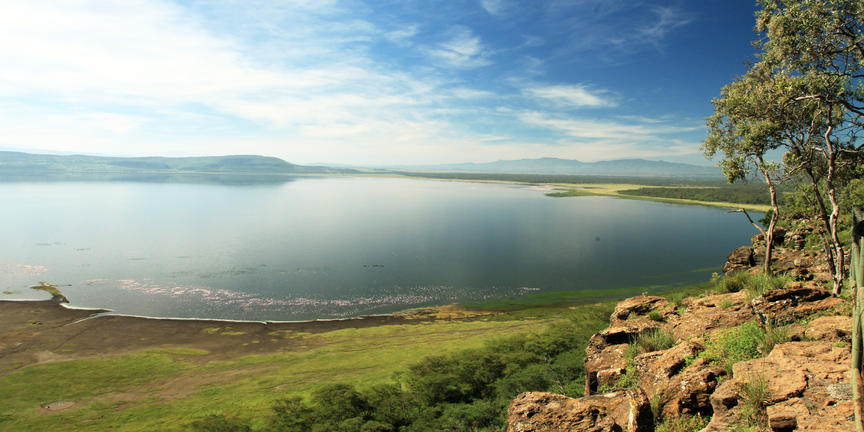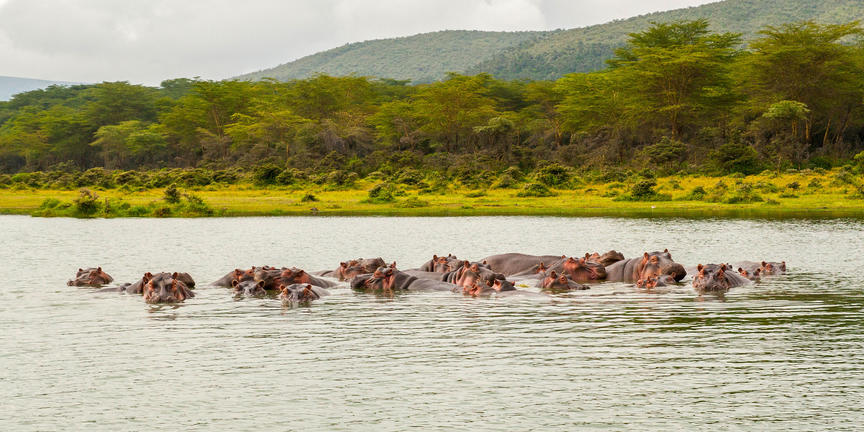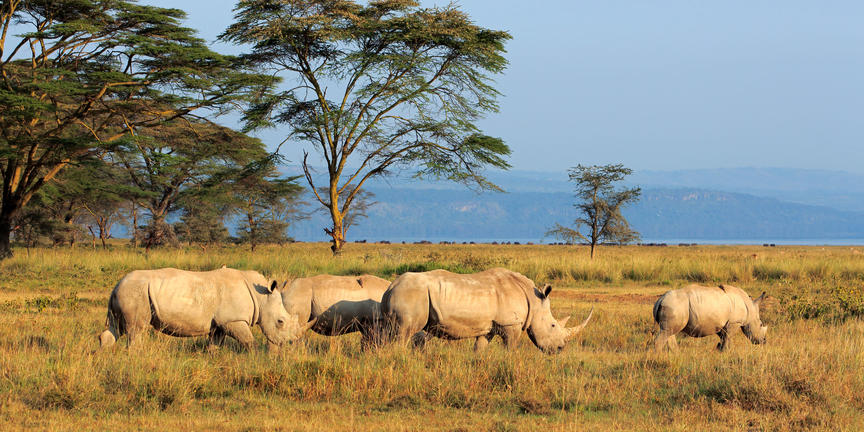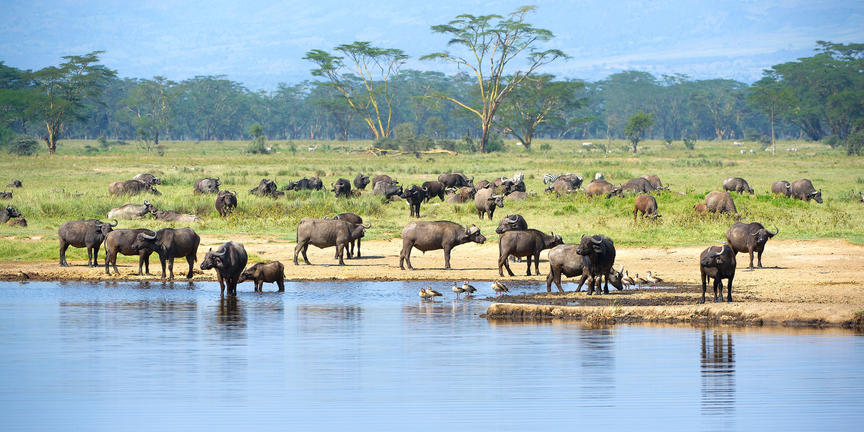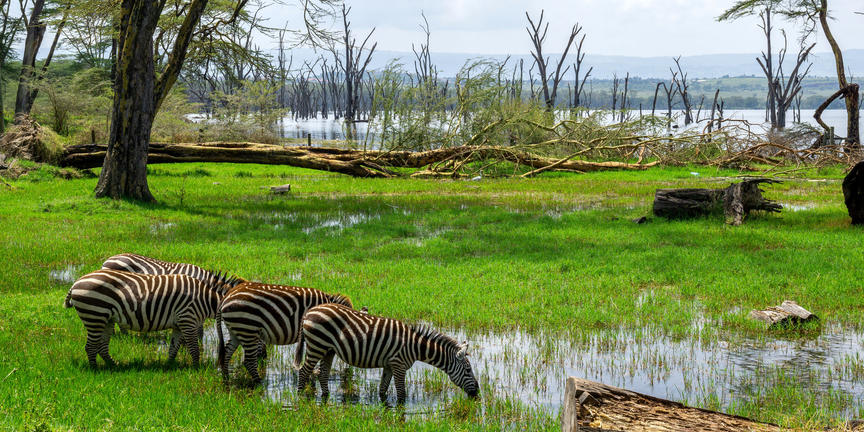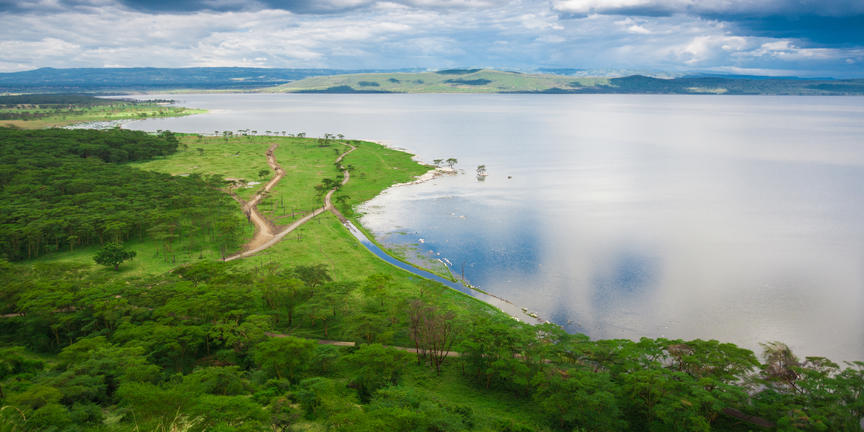Bordered by sweeping acacia woodlands, golden grasslands, and rugged volcanic ridges, Lake Nakuru fills a shallow basin within Kenya’s Great Rift Valley. Its alkaline, mineral-rich waters shift in colour from blue-green to soft silver-grey, depending on algae growth and the changing light. Formed in a region shaped by ancient volcanic activity, the lake once supported dense blooms of algae—an essential food source for flamingoes. In recent years, rising water levels have diluted the salinity, reducing algae growth and influencing bird movement. Even so, smaller migrating groups still gather along the shoreline, their vivid pink plumage set against the water, one of Lake Nakuru’s most iconic sights. The lake forms the heart of Lake Nakuru National Park, where game drives follow shoreline tracks and climb to viewpoints like Baboon Cliff, with sweeping views of the lake, escarpments, and open plains. Birdlife remains abundant, with pelicans, herons, fish eagles, and over 400 other species drawn to this varied and striking environment.
